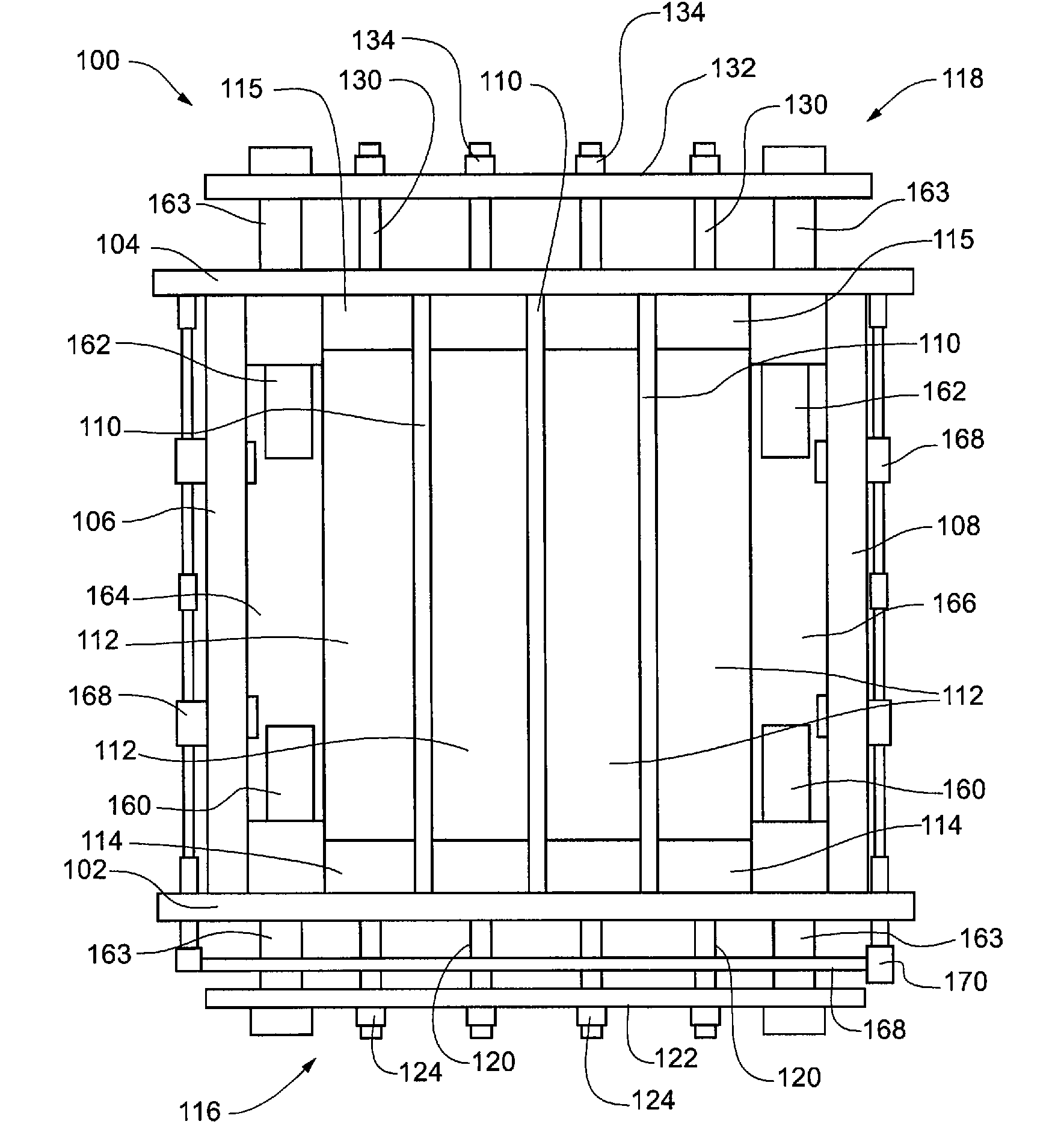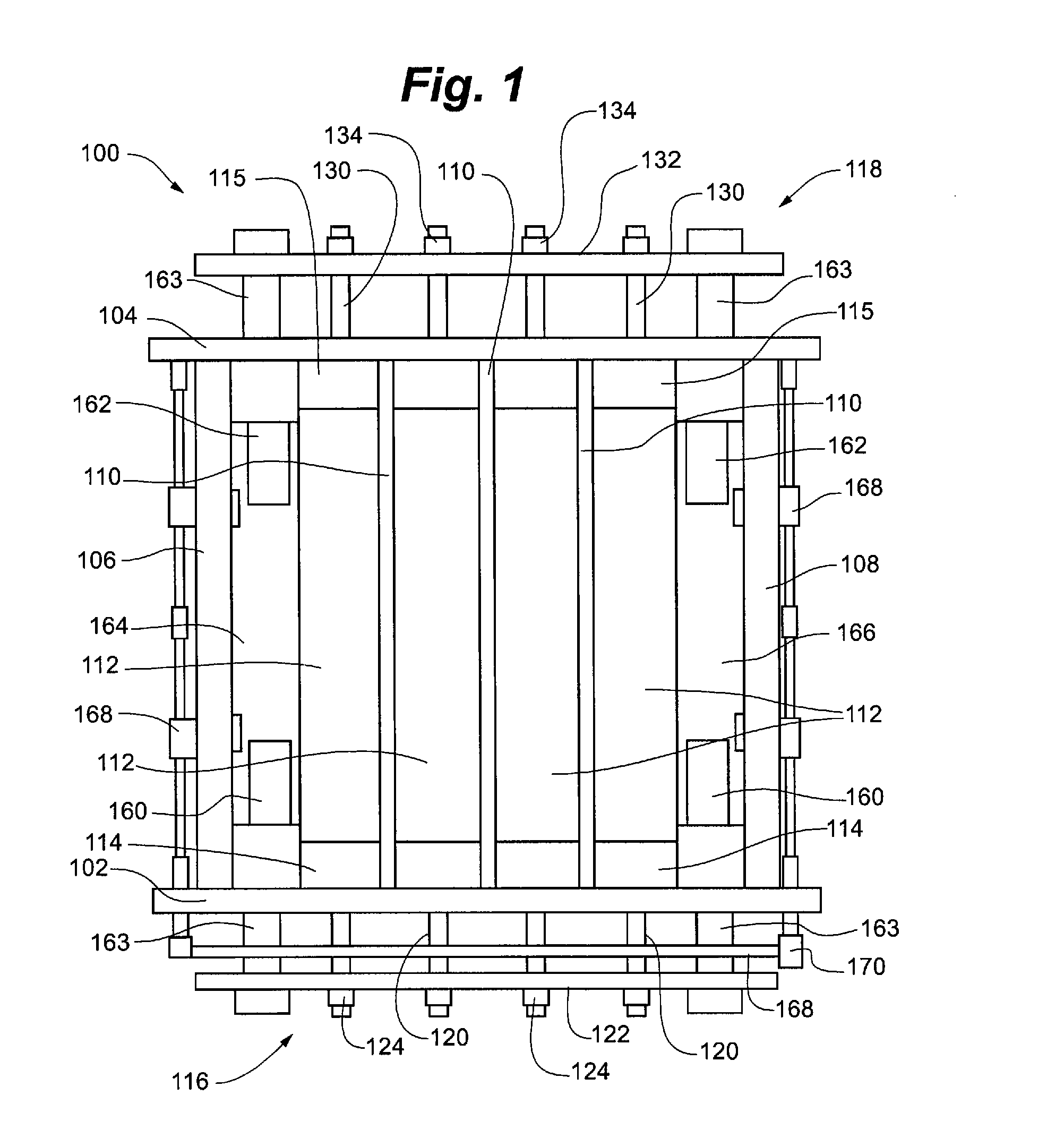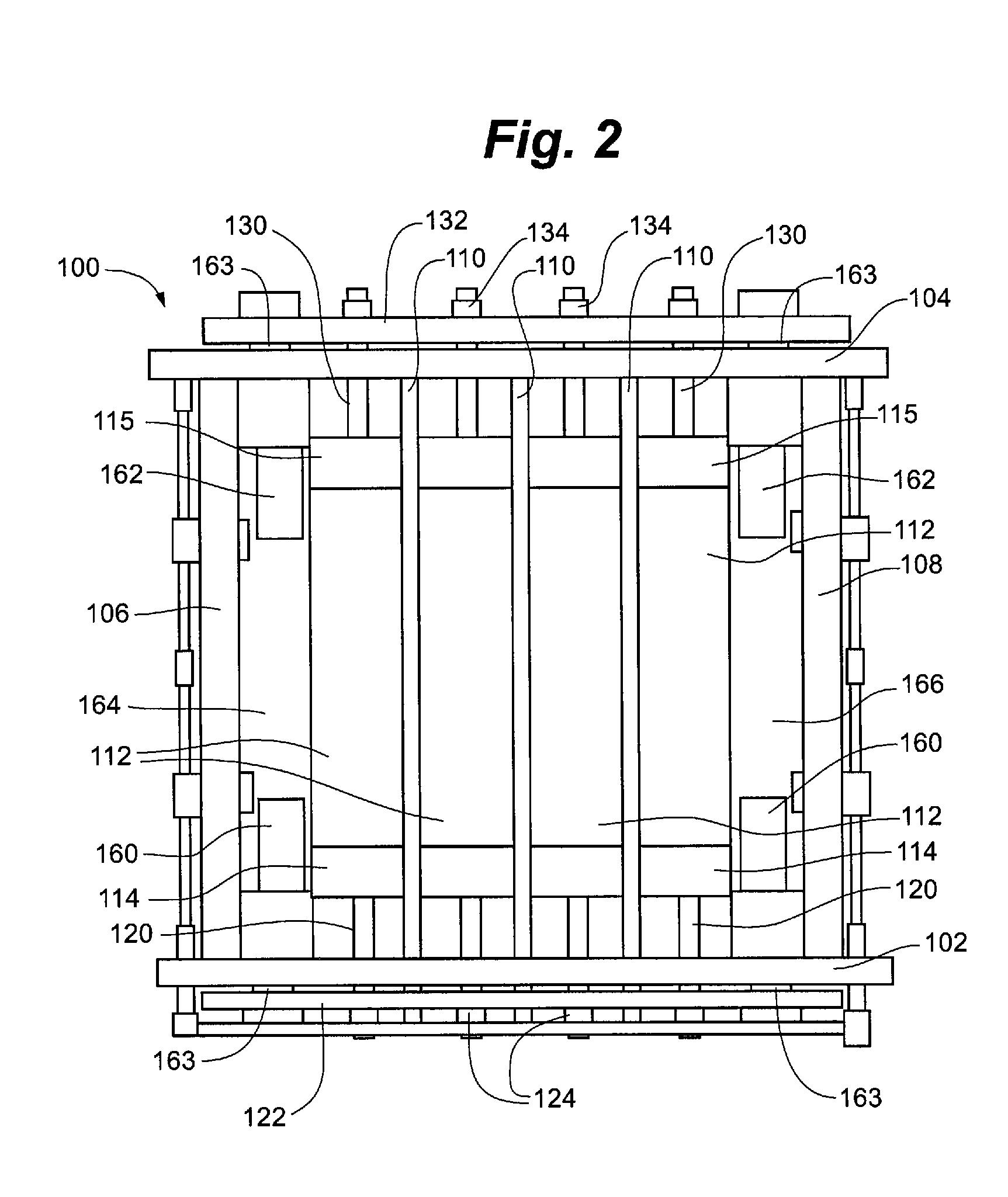System and method for manufacturing concrete blocks
a technology of concrete blocks and manufacturing methods, applied in the field of manufacturing concrete wall blocks, can solve the problems of waste of materials, limit the ability to create decorative front faces on blocks, and add additional production costs
- Summary
- Abstract
- Description
- Claims
- Application Information
AI Technical Summary
Benefits of technology
Problems solved by technology
Method used
Image
Examples
Embodiment Construction
[0027]Referring to FIGS. 1-2, there is depicted a dry-cast block mold 100 according to an embodiment of the present invention. FIG. 1 depicts block mold 100 in a first position corresponding to a “release” or “strip” position. FIG. 2 depicts block mold 100 in a second position corresponding to a “fill” position.
[0028]Dry-cast block mold 100 generally includes of a pair of side bars 102, 104, and a pair of side plates 106, 108 that define an open interior region. Division plates 110 span side bars 102, 104, creating multiple mold cavities 112. A front end liner 114 and a rear end liner 115 can be disposed in each mold cavity 112. One of skill in the art will recognize that the number of division plates may be varied to increase or decrease the number of mold cavities, and accordingly, the respective number of end liners.
[0029]Front end liners 114 are connected and controlled by a front end liner connector assembly 116. Front end liners 114 are each connected to a front end liner push...
PUM
| Property | Measurement | Unit |
|---|---|---|
| height | aaaaa | aaaaa |
| rate of speed | aaaaa | aaaaa |
| pressure | aaaaa | aaaaa |
Abstract
Description
Claims
Application Information
 Login to View More
Login to View More - R&D
- Intellectual Property
- Life Sciences
- Materials
- Tech Scout
- Unparalleled Data Quality
- Higher Quality Content
- 60% Fewer Hallucinations
Browse by: Latest US Patents, China's latest patents, Technical Efficacy Thesaurus, Application Domain, Technology Topic, Popular Technical Reports.
© 2025 PatSnap. All rights reserved.Legal|Privacy policy|Modern Slavery Act Transparency Statement|Sitemap|About US| Contact US: help@patsnap.com



